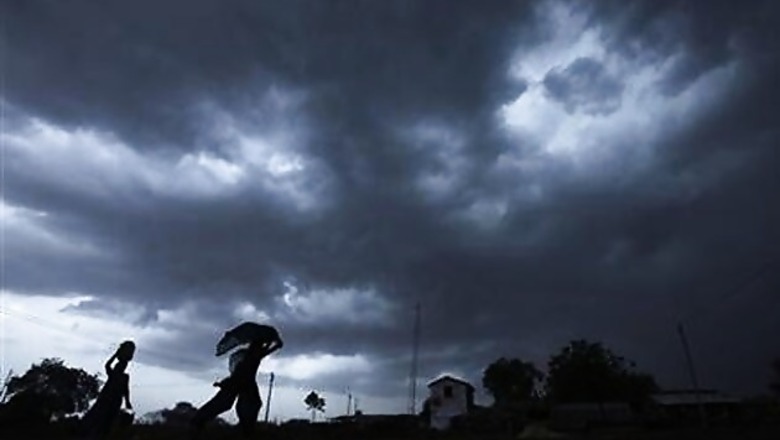
views
Oslo: The Indian monsoon is likely to fail more often in the next 200 years threatening food supplies, unless governments agree how to limit climate change, a study showed on Tuesday. The monsoon rains could collapse about every fifth year between 2150 and 2200 with continued global warming, blamed mainly on human burning of fossil fuels, and related shifts in tropical air flows, it said. "Monsoon failure becomes much more frequent" as temperatures rise, Anders Levermann, a professor of dynamics of the climate system and one of the authors at the Potsdam Institute for Climate Impact Research, told Reuters.
India's monsoon, which lasts from June to September, is vital for India's 1.2 billion people to grow crops such as rice, wheat and corn. India last faced a severe widespread drought in 2009 and had to import sugar, pushing global prices to 30-year highs. The researchers defined monsoon "failure" as a fall in rainfall of between 40 and 70 per cent below normal levels. Such a drastic decline has not happened any year in records dating back to 1870 by the India Meteorological Department, they said.
"In the past century the Indian monsoon has been very stable. It is already a catastrophe with 10 per cent less rain than the average," Levermann told Reuters. The study, in the journal Environmental Research Letters, projected a temperature rise of 4.6 degrees C (8.3 F) over pre-industrial times by 2200. UN scenarios indicate a gain of between 1.1 and 6.4 degrees C (2.9-11.5F) by 2100.
Assuming a 4.6 degree C rise by 2200, about 10 monsoons would fail in the 50 years to 2200 with daily rainfall of only about 3 mm (0.11 inch), about half of the normal 6 to 7 mm. (0.24 to 0.28 inch), the study indicated. Almost 200 nations have promised to limit global warming to below 2.0 degrees C (3.6 F) above pre-industrial times to avoid dangerous changes such as more droughts, floods and rising sea levels.
But world emissions are rising and the 2 degree ceiling is getting harder to achieve. Environment ministers from around the world will meet in Qatar from November 26-December 7 as part of talks meant to end by 2015 with a global deal to combat climate change. Higher temperatures will mean that more water evaporates from the oceans, increasing rains in many areas.
But the study said that the shifts would disrupt air flows known as the Pacific Walker circulation, which usually helps to drive the Indian monsoon by bringing high pressure to the western Indian Ocean, the study said. In years with an El Nino weather phenomenon, which warms waters in the eastern Pacific, the Walker pattern gets shifted eastwards, bringing high pressure over India. That pattern suppresses the monsoon.
"As temperatures increase in the future, the Walker circulation, on average, brings more high pressure over India, even though the occurrence of El Nino doesn't increase," a statement about the findings said. The study contrasts with a 2007 report in which the UN panel of climate scientists said that most models predicted more variability in the amounts of rainfall in the Asian monsoon this century, along with a trend towards more rain on average.
















Comments
0 comment